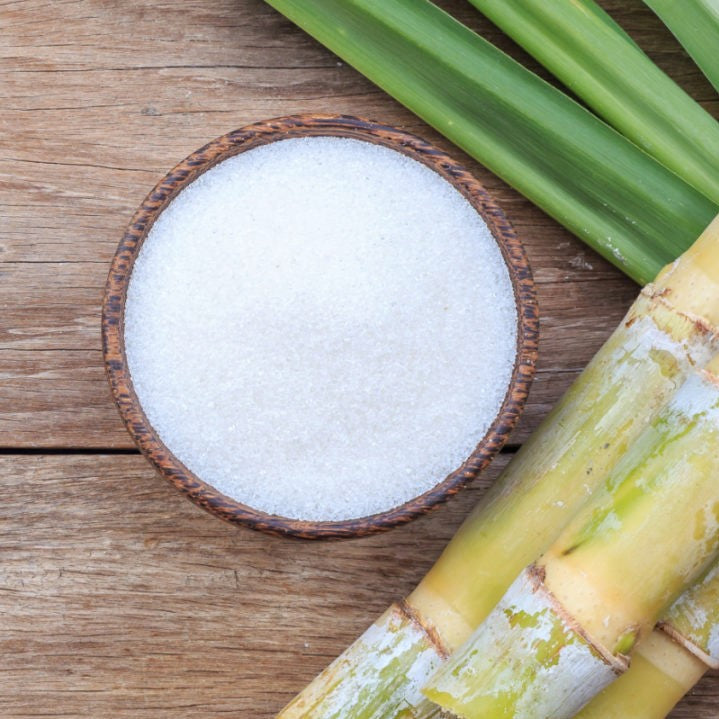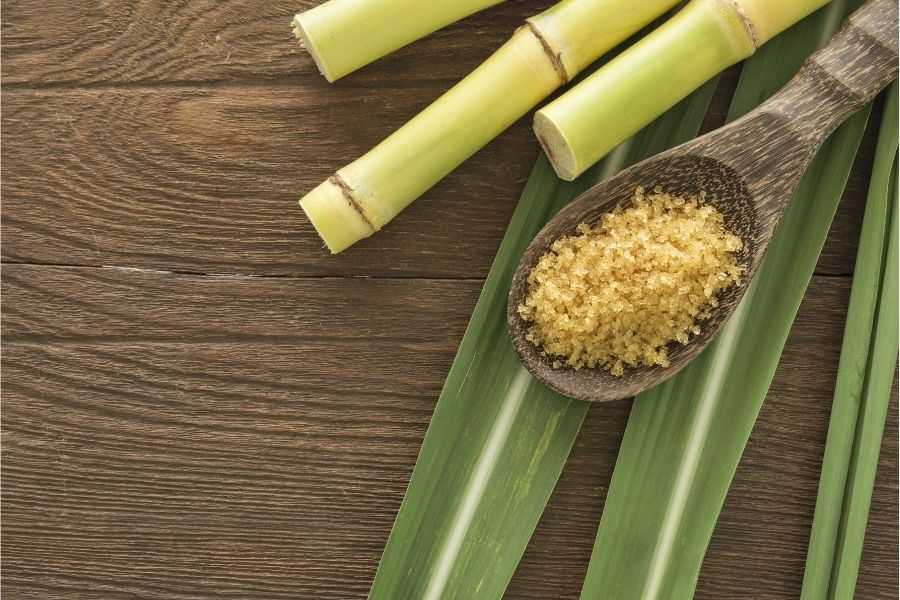A Comprehensive Overview to the Environmental Impact and Sustainability Practices in Cane Sugar Processing
The environmental effect of walking stick sugar handling provides a complicated selection of challenges that warrant careful evaluation. From soil deterioration and extreme water usage to the carbon impact related to growing and production, the effects of standard practices are significant. On the other hand, the adoption of ingenious sustainability actions supplies a pathway toward extra accountable manufacturing techniques. Comprehending the interplay between these concerns is essential for stakeholders in the industry. What specific techniques can be applied to strike an equilibrium between productivity and ecological stewardship? The solutions hinge on a better take a look at both the challenges and possible options.
Review of Walking Stick Sugar Handling
Walking stick sugar handling entails a collection of organized steps that change sugarcane into polished sugar. Initially, collected sugarcane is delivered to processing centers, where it undertakes cleaning up to get rid of soil and particles. Following this, the cane is squashed to extract juice, which is then made clear by removing pollutants via heating and the enhancement of lime.
The cleared up juice undertakes evaporation, where water is eliminated to focus the sugar web content. These crystals are separated from the staying syrup utilizing centrifugation, resulting in raw sugar.
The end product is then dried out and packaged for circulation. Throughout this entire procedure, keeping performance and top quality control is essential to guarantee the sugar fulfills market standards. Each action in cane sugar handling not only adds to the last item however also has effects for resource use and waste generation, establishing the stage for conversations on sustainability and ecological influences associated with sugar manufacturing.
Environmental Challenges of Production
The manufacturing of walking cane sugar offers numerous substantial ecological difficulties that warrant interest. One main issue is the comprehensive use agrochemicals, including chemicals and plant foods, which can result in soil degradation, biodiversity loss, and contamination of local water resources. The overflow from sugarcane areas often carries these chemicals right into close-by ecological communities, interfering with water life and affecting the wellness of areas reliant on these water bodies.
One more challenge is the high energy usage associated with sugarcane handling. The boiling and refining phases require considerable warm, mainly created by shedding fossil fuels, adding to greenhouse gas discharges. In addition, the large land area needed for sugarcane growing can lead to deforestation and environment damage, further aggravating climate modification and harmful wild animals.
Additionally, the labor practices in some areas elevate moral problems, as workers might face inadequate working conditions and insufficient wages. This scenario commonly continues a cycle of poverty in regional areas. Cane Sugar Processing. Attending to these environmental challenges is crucial for developing extra sustainable techniques in walking stick sugar production, inevitably benefiting both the setting and the areas involved in this sector
Water and Land Usage Impact
Water sources and land application are vital parts in the cane sugar market that dramatically impact the atmosphere. The farming of sugarcane requires considerable water input, with quotes recommending that it can take in up to 2,000 liters of water per kilogram of sugar produced. This extensive use water typically brings about depletion of local water resources, affecting not only the sugarcane vineyards however additionally bordering communities and neighborhoods that depend on the very same water resources for farming and residential use.

In addition, land use for sugarcane farming can result in logging and the conversion of natural habitats into monoculture vineyards. This practice decreases biodiversity, interferes with local ecological communities, and contributes to soil destruction. The development of sugarcane fields commonly trespasses on useful agricultural land, producing competitors for sources between food and biofuel production.
Lasting techniques, such as optimizing irrigation methods and applying crop turning, are vital to reduce these influences. By taking on more efficient water usage and land administration approaches, the cane sugar industry can decrease its environmental impact, ensuring a balance between agricultural efficiency and ecological conservation.
Greenhouse Gas Emissions
Greenhouse gas exhausts stand for a substantial ecological concern within the walking stick sugar handling sector, specifically as farming techniques increase to fulfill international need. The farming of sugarcane, a plant that prospers in exotic environments, counts greatly on artificial plant foods and chemicals, which add to laughing gas discharges. Furthermore, land-use modifications, including deforestation for new sugarcane vineyards, launch carbon dioxide stored in vegetation and soil.
During processing, power usage is Check Out Your URL one more significant source of greenhouse gas exhausts - Cane Sugar Processing. Lots of sugar mills utilize nonrenewable fuel sources to power equipment and generate warmth, leading to read this considerable carbon impacts. Moreover, the transportation of raw sugarcane and ended up items adds layers of exhausts with gas combustion in vehicles
This entails assessing present farming practices, processing techniques, and transport systems to determine locations for enhancement and reduction. Resolving greenhouse gas emissions is vital for cultivating a more sustainable walking stick sugar sector in a changing climate.

Lasting Practices and Innovations
Sustainable techniques and advancements are increasingly essential in the walking stick sugar handling market as stakeholders look for to decrease ecological effects while keeping efficiency. One significant innovation is the implementation of incorporated crop administration, which optimizes resource usage by integrating dirt management, bug control, and plant rotation strategies. This method improves yield while decreasing chemical inputs and preserving dirt wellness.
Furthermore, the fostering of sustainable power resources, such as biomass from sugarcane residues, has actually gained traction - Cane Sugar Processing. By transforming waste products into power, processing facilities can lower their reliance on fossil gas, therefore lowering greenhouse gas exhausts
Water management methods have actually also seen enhancements via the recycling and reusing of water in processing plants, substantially reducing freshwater usage. Technologies in technology, such as accuracy agriculture, allow farmers to check crop health and source usage better, making certain lasting farming practices.
Additionally, certification programs like Fair Trade and Rainforest Alliance encourage environmentally accountable farming methods and promote social equity click within the supply chain. By embracing these sustainable practices and developments, the cane sugar processing industry can boost its strength and add favorably to ecological stewardship.
Final Thought
The environmental effect of cane sugar processing offers substantial obstacles, consisting of soil destruction, high water intake, and greenhouse gas exhausts, together with honest issues connected to labor practices. Addressing these concerns via lasting practices, such as integrated plant administration, renewable resource fostering, and water recycling, is crucial. By advertising ecologically responsible and socially fair approaches in sugar manufacturing, the industry can minimize its negative impacts, guaranteeing an extra lasting future for both ecosystems and areas involved in this sector.
Walking stick sugar processing entails a series of organized steps that change sugarcane into polished sugar. Each step in walking cane sugar processing not just contributes to the last product however also has effects for resource usage and waste generation, setting the stage for conversations on sustainability and environmental influences connected with sugar manufacturing.
Greenhouse gas emissions stand for a significant ecological issue within the walking cane sugar processing sector, particularly as agricultural techniques broaden to fulfill global demand.Lasting practices and technologies are progressively essential in the cane sugar handling market as stakeholders look for to decrease ecological influences while maintaining efficiency.The ecological effect of walking stick sugar handling presents considerable challenges, including soil destruction, high water consumption, and greenhouse gas emissions, along with ethical issues connected to labor methods.